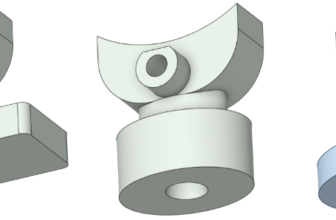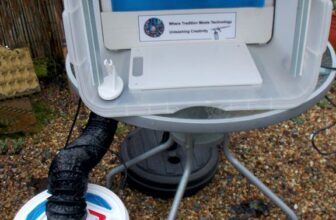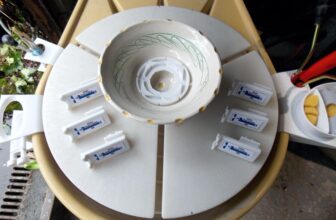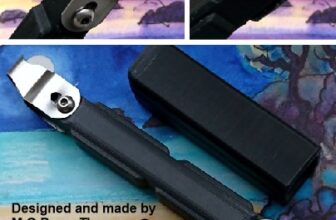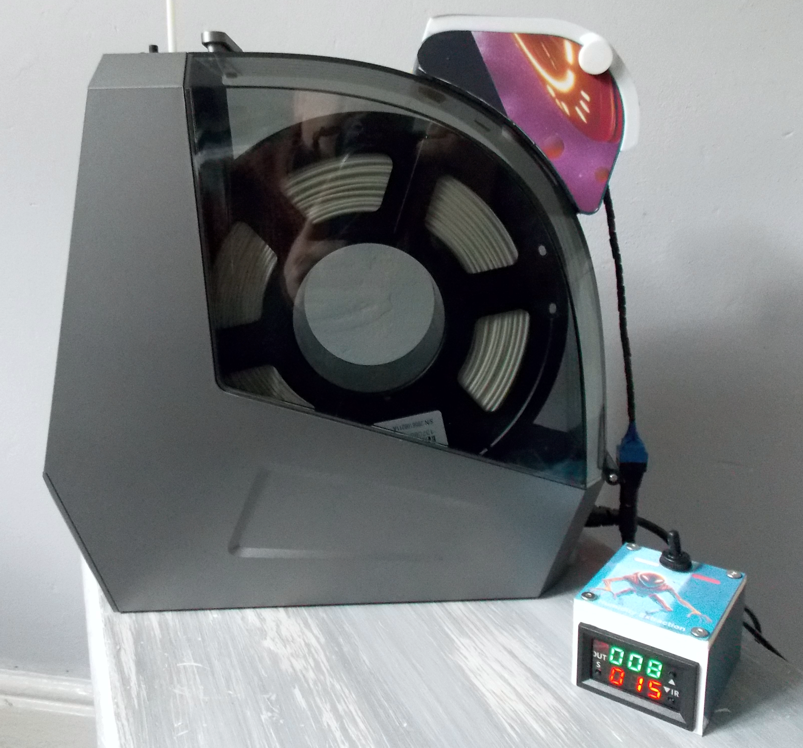
Emergency capsule, powered by the process of removing moisture from the air.
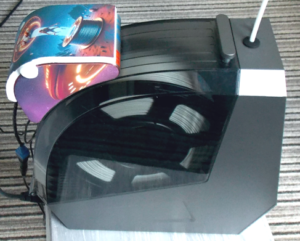
The improvement to our space pi filament dryer now includes a compact emergency capsule, powered by the process of removing moisture from the air.
I couldn’t help myself from buying this incredible filament dryer, and I immediately felt compelled to enhance its capabilities.
Having a specific interest in the regulation of temperature and humidity played a significant role in my decision.

Therefore, I powered up my DesignSpark Mechanical CAD software and embarked on the project of designing a casing to accommodate a miniature fan, tasked with the removal of humid air. While the concept may appear straightforward, the practical implementation isn’t quite so. The challenge arises in ensuring the fan’s extraction system operates without disrupting the built-in heating mechanism of the dryer.

There exists a multitude of methods to regulate the voltage for compact DC fans that operate between 5 and 12 volts. My selection was a 12-volt DC fan, which is linked to a compact timing device.
This device is equipped with two timers; the first timer initiates the fan, initiating a countdown. As soon as it hits zero, the second timer activates and begins its own countdown. This function permits the alternating operation of the fan across several timing intervals, thus providing precise control over the humidity extraction process inside the filament dryer.
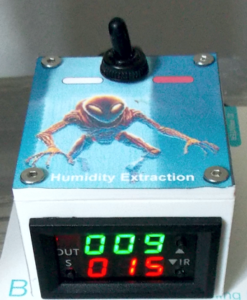
When the compact fan turns off, the positioning of the vent hole ensures that heat is not lost since the air circulates within the main chamber. The reason for selecting a small-sized fan to be placed at the vent’s top is to draw out some of the moisture efficiently. If there is an interest in undertaking this project, I am more than willing to compile a PDF with instructions, which will include a hyperlink to download the associated CAD files.
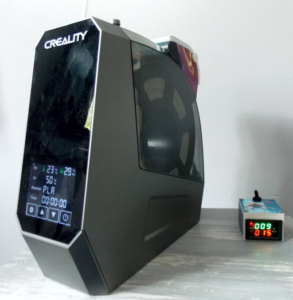
Assembling this project is quite straightforward.
The design was created by Michael G. Parry-Thomas.
Update testing the accuracy of the internal temperature and humidity sensor 12/08/24
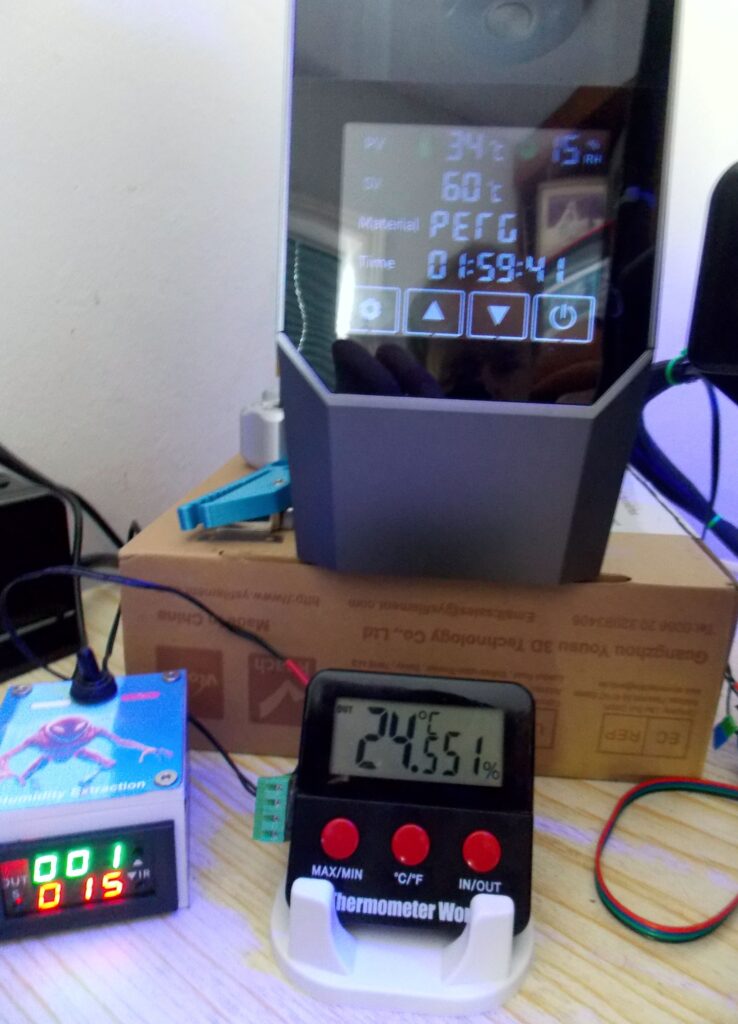
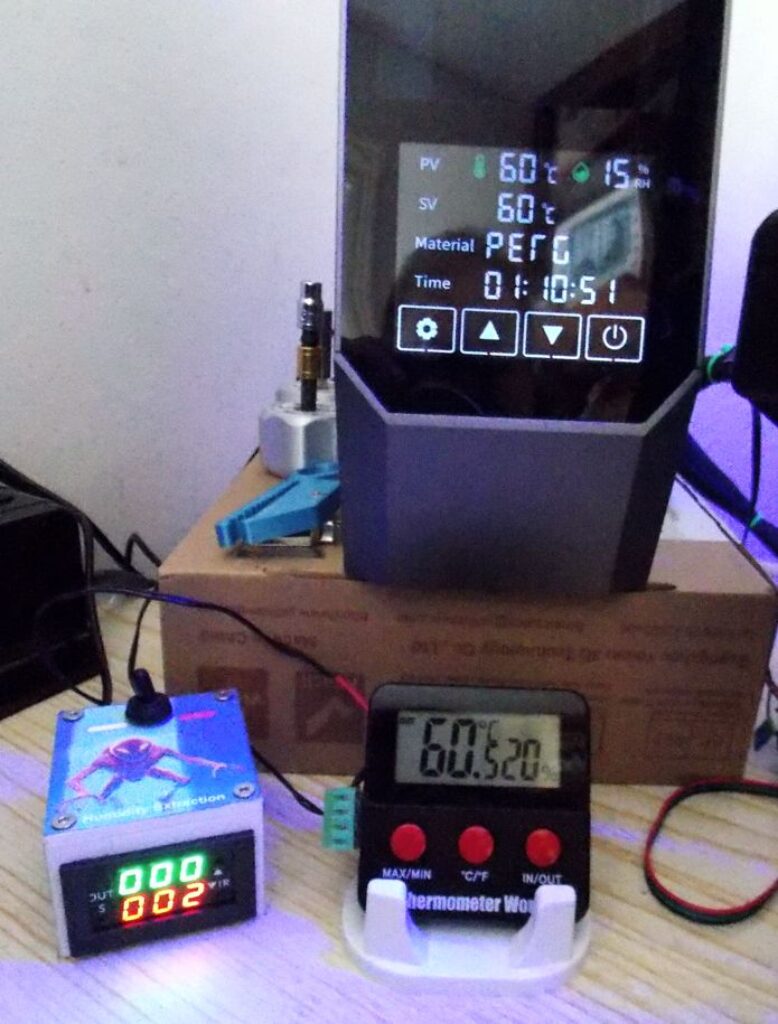
I have been utilizing my filament dryer for quite a while now, and one of the key enhancements I made was the addition of a small space capsule designed to eliminate the moisture accumulation in the dryer chamber. This modification is highly effective; however, I have encountered another issue with the dryer: the humidity sensor appears to be stuck at 15%. It seems that this sensor would likely function correctly in a weather station-like setting, but once placed in an environment with excessive heat, it struggles to accurately monitor humidity levels. Additionally, it becomes quite challenging to rely on inexpensive components to counteract the elevated temperatures. Overall, the heating system within the filament dryer performs excellently and meets the claims made in its packaging, which is crucial since the primary purpose of the dryer is to control temperature effectively over time while drying the filament.
Since I wanted to accurately determine the humidity levels in the heating chamber and also verify the temperature, I decided to purchase a compact module equipped with an external temperature probe and an external humidity probe. This specific device was intended for monitoring the internal conditions of snakes and reptiles, making it ideal for my needs, considering it was designed for high temperatures and varying humidity levels.
The initial step I took was to modify both the humidity and temperature probes so that I could disconnect them and feed them through a small opening into the filament dryer, then reconnect them to the LED display. Consequently, I soldered a four-pin connector to the internal circuit board of the LED display (please see the accompanying image). This alteration allowed me the flexibility to route the cables and position both sensors in an optimal location within the filament dryer, resulting in accurate readings of temperature and humidity.
To my astonishment, when I checked, the internal humidity was at 52% according to my humidity probe, yet the filament dryer displayed only 15%. I programmed the dryer to operate for two hours with some PETG filament, maintaining a stable temperature of 60°C. After an hour had passed, the external humidity probe indicated a drop to 20%, while the dryer’s internal humidity sensor stubbornly remained at 15%. Next, I opened the filament door completely and turned off the power to stop any heating. Eventually, I observed my external humidity sensor gradually increasing until it reached the room’s humidity level, which was 63%. I then noticed at this level of humidity, the filament dryer’s reading began to increase to 17%. This stark discrepancy highlights a significant issue with relying on the internal humidity sensor, and I recommend disregarding the dryer’s humidity reading in favour of installing a more efficient and suitable temperature and humidity monitoring system.
The only potential solution I see for addressing the dryer’s humidity sensor issue is a complete redesign that factors in how high temperatures impact the humidity sensing element currently in use. Moreover, the electronics involved can also significantly influence the accuracy of humidity readings, as some components must be more advanced to ensure precise measurements in such a compact enclosure.
It’s important to mention that this filament dryer is fantastic. While challenges will inevitably arise when attempting to measure humidity in such a small, high-temperature chamber with limited airflow, do not let the humidity indicator deter you from using this remarkable dryer. In my opinion, everything else functions effectively. If you do experience humidity build up in your filament, you might consider a simple modification by adding a small fan on a timer cycle to help extract the moisture during the drying process.



